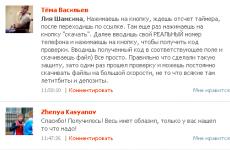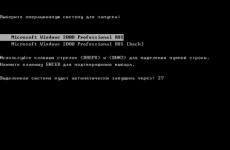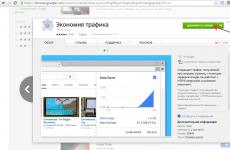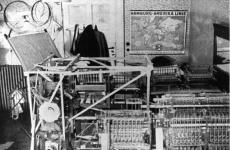What is the range of the police wave? Reviews and useful information for radio amateurs. Russian radio frequency
A person who is little familiar with the rules of civil radio traffic (and generally knows little about the existence of any rules in this area) often does not think about what frequencies, as an ordinary citizen Russian Federation you can communicate.
These questions come later, when the unpacked walkie-talkie is in our hands and we are trying to figure it out. And it’s good if, when trying to figure it out, we don’t tune our walkie-talkies to any available waves, starting to test them (here we’re talking about walkie-talkies that have technical feasibility work at special frequencies, if you have a point-and-shoot device that works only at PMR frequencies, you don’t need to worry about setting up or complying with the law)! The article is dedicated to radio beginners, just like the author of the article himself, and talks about some of the basics!
On what frequencies can civilians communicate in Russia?
First of all, you need to understand that at the moment only 3 frequency ranges are allocated for civil communications in Russia (PMR / CB / LPD), and each frequency range has its own nuances. Which, however, we will not describe in detail, limiting ourselves to only brief information.
PMR/ Pi-em-er: 446.00000 MHz - 446.10000 MHz / Step 12.5 kHz. Maximum permissible output power transmitting devices 0.5 W. PMR is used in many European countries to meet a wide variety of civilian needs. In Russia, the PMR band has been officially permitted for free radio traffic since 2005. A special license is NOT required to communicate on the PMR band. The sale of cheap walkie-talkies that operate exclusively on the PMR band is widespread. The PMR range has a total of 8 channels:
Start of range: 446.00000 MHz
1 channel: 446.00625 MHz
Channel 2: 446.01875 MHz (common automobile channel, used as an analogue of CB band channel 15 by truckers.)
Channel 3: 446.03125 MHz
Channel 4: 446.04375 MHz
Channel 5: 446.05625 MHz
Channel 6: 446.06875 MHz
Channel 7: 446.08125 MHz
Channel 8: 446.09375 MHz (Used only for calling or transmitting a distress signal.)
End of band: 446.10000 MHz
A message in PMR can be transmitted over several kilometers, depending on the transmission conditions (city, forest, field, etc.). However, a rare case of signal transmission at 535.8 km is known (From Great Britain to the Netherlands), but this became possible due to a rare anomaly for this range of wave transmission on long distances. To ensure good communication over long distances, line-of-sight conditions are necessary; theoretically, from a balloon or the ISS station they can easily hear you, but the more rugged the terrain, the shorter the achieved range.
LPD: 433.075 MHz - 434.775 MHz (25 kHz step) The maximum permissible output power of transmitting devices is no more than 10 mW. A range of radio frequencies for low-power devices, permitted for free use in many countries with some restrictions.
LPD frequencies for 69 channel radio.
Channel number - frequency in MHz:
01 — 433.0750
02 — 433.1000
03 — 433.1250
04 — 433.1500
05 — 433.1750
06 — 433.2000
07 — 433.2250
08 — 433.2500
09 — 433.2750
10 — 433.3000
11 — 433.3250
12 — 433.3500
13 — 433.3750
14 — 433.4000
15 — 433.4250
16 — 433.4500
17 — 433.4750
18 — 433.5000
19 — 433.5250
20 — 433.5500
21 — 433.5750
22 — 433.6000
23 — 433.6250
24 — 433.6500
25 — 433.6750
26 — 433.7000
27 — 433.7250
28 — 433.7500
29 — 433.7750
30 — 433.8000
31 — 433.8250
32 — 433.8500
33 — 433.8750
34 — 433.9000
35 - 433.9250 (Frequency at which key fobs operate car alarms, if you hold down the PTT button, you can mute the signal with all that it entails. We strongly discourage doing such things).
36 — 433.9500
37 — 433.9750
38 — 434.0000
39 — 434.0250
40 — 434.0500
41 — 434.0750
42 — 434.1000
43 — 434.1250
44 — 434.1500
45 — 434.1750
46 — 434.2000
47 — 434.2250
48 — 434.2500
49 — 434.2750
50 — 434.3000
51 — 434.3250
52 — 434.3500
53 — 434.3750
54 — 434.4000
55 — 434.4250
56 — 434.4500
57 — 434.4750
58 — 434.5000
59 — 434.5250
60 — 434.5500
61 — 434.5750
62 — 434.6000
63 — 434.6250
64 — 434.6500
65 — 434.6750
66 — 434.7000
67 — 434.7250
68 — 434.7500
69 — 434.7750
LPD frequencies for 8 channel radio.
Channel number - frequency in MHz / correspondence to channels on a walkie-talkie with 69 channels:
01 — 433.0750 / 1
02 — 433.1000 /2
03 — 433.2000 /6
04 — 433.3000 /10
05 — 433.3500 /12
06 — 433.4750 /17
07 — 433.6250 /23
08 — 433.8000 /30
CB: CB (output power of radio stations up to 10 W does not require registration in the Russian Federation) - used for civil radio communications. There are quite a few areas of application, for example, establishing communication between buildings, cars, and surface transport.
It has an advantage over the PMR and LPD bands when it comes to use in forests and rough terrain, but PMR and LPD are more suitable for the city, this is due to the wavelength.
In addition to the frequencies themselves, the CB range also uses a grid consisting of an alphanumeric code. Here are some useful CB radio frequencies: The frequency 27.135 MHz C15EA can be called the main automotive frequency in Russia. This is the calling frequency on which not only truckers communicate, but also everyone who has a radio station in their car throughout Russia.
Frequency 27.225 MHz (22nd channel of grid C) - channel of car enthusiasts of the 4X4 club.


Not a big conclusion on the given civilian frequencies.
The conclusion, in general, is from a fellow newcomer who obtained information from the Internet. As I understand it (correct me in the comments if I’m wrong), if your radios are suitable in all respects (strength of the outgoing signal, antenna design, etc.) to such an extent that they do not need to be registered and you comply with all the rules of radio communication, while trying to no one don't interfere, you can safely use these waves! If there are problems with the parameters of the radio, it should be registered. At the same time, again, as I understand it, they will flash it artificially, limiting the exceeded indicators. You can, of course, use the radio at your own risk. At the same time, it is strictly forbidden for us to use other frequencies for transmission! That is, you can’t even just press the PTT button on them, because... this may interfere with various services! An exception may be a distress signal, that is, if your life is in danger and you are trying to contact at least someone to save you. This action will be within the law.
In conclusion, let’s touch a little on the topic of Radio Amateurs. How to officially become a radio amateur, get a rating, a license and register your call sign can be found on the Internet. We note that we, as ordinary citizens, are also prohibited from using the frequencies of official radio amateurs for communication. If you officially join the ranks of radio amateurs, go through all the necessary procedures, you will be able to use 144,000 MHz - 146,000 MHz - civil radio communications for licensed radio amateurs, and not just anyhow, but according to the rules.
I hope that the information presented here was useful to you! And if you have something to say on this topic, write comments and share your experience!
© SURVIVE.RU
Post Views: 160,452
Radio bands and frequencies
In this article we will briefly look at what frequencies are allocated for radio communications and what radio stations and what range should be considered when choosing equipment in a given case. The article is presented in free form, using simplifications in some concepts and details. Does not claim encyclopedic accuracy, but will give a general idea of the frequencies used in Russia and the radio communication equipment used.
Let's consider What ranges do radios operate in? and why, in one case or another, different ones are used radio frequency ranges.
Shortwave range - 1-30 MHz
HF radio It is used primarily by the military, the Ministry of Emergency Situations, the navy, forestry and environmental organizations for professional communications over long distances - from 150 to 8000 km.
The main disadvantages of the HF range are low noise immunity and the need to use large antennas up to several tens of meters long. Pros: absolute autonomy, long communication range and low cost compared to satellite communications.
Main equipment used: Icom, IC-M802., Vertex VX-1700, VX-1400, VX-1200/1210., Kenwood TK-90, Cordon P-12, Q-Mac HF 90M, Barrett PRC-2090, PRC- 2091, Karat, Angara.
Also, within the range of 1-30 MHz, there are 9 frequency sections allocated for communication to radio amateurs. The main HF amateur radio equipment used is transceivers from Kenwood, Icom, Yaesu, and Elecraft. If for professional stable radio communication the range is usually limited to 8000 km, then radio amateurs often conduct transcontinental radio communication sessions with their colleagues located on the other side of the globe.
Currently, the market for software-based radio - SDR equipment - is gaining momentum. Software-based radio is beginning to be widely used in amateur radio, military, and commercial applications. To date, Harris and Alcatel Lucent have already implemented several successful projects, which use equipment based on SDR technology and cognitive radio (a radio system capable of receiving information about the characteristics of its own operation and, based on this data, adjusting its operating parameters). In the future, SDR technology has every chance of becoming a new standard in the telecommunications market.
Civil band - 27 MHz
Conventionally called the “27 MHz band”. Frequency range 25.6-30.1 MHz (officially permitted section - 26.965-27.860 MHz). Another name is CB range from the English abbreviation CB - Citizen Band.
Range of truckers on walkie-talkie This is the 15th channel, with a frequency of 27.135 MHz, in amplitude modulation (AM) mode. The channel is actively used by truckers for communication on the highways. In big cities, CB radios 27 MHz, used by motorists to exchange information about traffic conditions. In different cities, different channels are used for urban communication. For example, in Krasnoyarsk it is channel 40, with a frequency of 27.405 MHz, in Kemerovo it is channel 27, with a frequency of 27.275 MHz. Frequency modulation (FM) is used at the frequencies of city auto channels.
Also, radio stations of this range are used by small taxi companies and cargo carriers, rapid response teams of security companies and utility services. Despite the affordability of the equipment, and the fact that, according to Decree of the Government of the Russian Federation dated October 13, 2011 No. 837, 27 MHz radios are not subject to registration, it is necessary to take into account the fact that the civil range is subject to large atmospheric and industrial interference and the use walkie-talkiesCB band for commercial purposes it is not suitable for enterprises that require high-quality radio communications. Portable CB radios, due to their small radius of action and relatively large dimensions, they are not particularly widespread and are used mainly during loading and unloading operations or at truck stops.
Most of the CB radio stations available in Russia are presented in our online store.
Buy CB radios which you can find in our online store are presented in .
Low-Band range - 33-57.5 MHz
This is the lower part of the VHF mobile radio range.
Due to the large influence of industrial interference in cities and interference from TV broadcast transmitters, this range is used mainly in rural areas. The main users, since the times of the USSR, are ambulance stations and agricultural enterprises. Today, most of the world's manufacturers have stopped producing radio stations for these frequencies. Equipment for the Low-Band range is currently offered by domestic manufacturers - the companies Granit and Webr. In warehouses you can still find radio stations from famous brands: Motorola GP340, GM360., Vertex Standard VX-3000L. The only available foreign manufacturer of equipment in the 33-57.5 MHz range remains Alinco, Inc. The company offers the DJ-V17L wearable radio and the DR-135LH and DR-M06R car (base) radios.
Aviation band - 118-137 MHz
Aircraft communicate with each other and with ground services in this frequency range. Unlike most other types of VHF communications, amplitude modulation is used. Popular airborne equipment –
wearable aviation radios:
156.8375-174 MHz - mobile and fixed terrestrial communications.
In accordance with the Basic Law “On Communications” dated July 7, 2003 No. 126-FZ, in order to organize radio communications in this range, it is necessary to obtain permission from the Federal State Unitary Enterprise “GRChTs”. If it is necessary to obtain frequencies, we can provide consulting and support in obtaining permits.
High noise immunity and good signal transmission have made the 136-174 MHz range the most popular among users and equipment manufacturers. Our store offers most popular models of VHF radios and antennas. Walkie-TalkieVHF band in our store are presented in .
River band - 300 MHz
Used for internal communications waterways.
Operating frequencies of walkie-talkies are in the range 300.0125-300.5125 MHz and 336.0125-336.5125 MHz.
River band radio comes with pre-installed channels dedicated to communication with ships and coastal services for various purposes.
Channel radio frequencies– their numbers and purpose are established by the “Instructions for the organization of ship radio communications in the basin (region)”, approved by the River Fleet Service of the Ministry of Transport of the Russian Federation and agreed with local authorities of the State Supervision of Radio Communications. So, the main channels are:
Channel 2 (300.05 MHz) - for communication between ships;
Channel 3 (300.1 MHz) - for communication with gateway dispatchers;
Channel 4 (300.15 MHz) - for communication with other river fleet services;
Channel 5 (300.2 MHz) - for calling ships, coordinating the order of passing and overtaking when maneuvering and transmitting distress signals.
Channels 25 and 43 (336.2 MHz and 300.125 MHz) are generally accepted for communication between yachts.
All radio stations installed on ships and on inland waterways must have an Approval from the River Register of Russia (RRR) and a Certificate from the Ministry of Communications, regardless of their affiliation and whether these radio stations are the main or additional equipment.
According to the frequency allocation approved by the International Telecommunication Union (ITU), frequencies in the range 156-162 MHz are used throughout the world for communications between ships (river and sea). The river band of 300 MHz is used only in Russia and the choice of equipment offered for this range is small. Popular river radio stations: Radioma-300, Vertex Standard VX-451/VX-454, .
VHF range - 400-470 MHz
In foreign sources, the range is designated as UHF, the name of which is derived from capital letters Ultra High Frequency.
The propagation features of UHF frequencies make it possible to recommend this range for use in dense urban areas and in the mountains. In forest conditions, radio stations at 400 MHz are inferior to radio stations in the 136-174 MHz range.
Frequency bands are allocated in the range for professional use, for radio amateurs and for license-free use by everyone.
Walkie-talkie frequencies, the operation of which, in accordance with the Basic Law “On Communications” dated July 7, 2003 No. 126-FZ, is possible only with permits:
420-430 MHz - mobile and fixed terrestrial communications;
430-440 MHz - amateur radio band;
440-470 MHz - mobile and fixed terrestrial communications.
If it is necessary to obtain frequency ratings, we can provide consulting and support in obtaining permits.
Areas of the range that, according to Decree of the Government of the Russian Federation of December 31, 2004 No. 896, do not require permits - permitted range of radios(license-free frequencies):
433.075-434.775 MHz – LPD (“Low Power Device”) range. Standard frequency grid of 69 nominal values, with a step of 25 kHz;
The entire broadcast spectrum on which radio frequencies divided into several ranges:
radio frequencies of long waves LW (LW), radio frequencies of medium waves SW (MW), radio frequencies of short waves HF (SW),
ultrashort wave radio frequencies VHF (FM). Each range is characterized by its own characteristics of radio wave reception and radio transmission quality.
Moscow radio stations
Residents of the metropolitan metropolis can listen to Moscow radio stations on radios that receive VHF FM signals, on televisions with a DVB-T2 digital decoder and on three-program radios of the wired broadcast network.
Ultrashort radio frequency waves 62-108 MHz propagate within the line of sight of the transmitter antenna. During radio broadcasting, frequency modulation is performed, which allows for the transmission of high-quality stereo signals. Antennas for this range are small in size and conveniently located on both stationary and mobile receivers. It is in the ultrashort wave (FM) range that most popular radio stations broadcast.
Russian radio frequency
In different cities of Russia, the same radio station broadcasts on different frequencies.
For example, in the Moscow region Russian radio broadcasts at a frequency of 105.7 fm, and in St. Petersburg Russian radio frequency is 107.8 fm.
List of FM radio stations Moscow 2017
Moscow radio stations are accepted throughout the city and in most districts of the Moscow region. The table shows frequencies of Moscow radio stations
for ease of searching and storing in digital and analogue radios
setting scale.
| Frequencies radio stations MHz |
List radio stations Moscow |
Frequencies radio stations MHz |
Radio stations Moscow |
| 91.6 fm | Radio Culture | 92.0 fm | Moscow FM |
| 92.4 fm | Radio Dacha | 92.8 fm | Radio Carnival |
| 93.2 fm | Radio Sport | 93.6 fm | Kommersant FM |
| 94.0 fm | Vostok FM | 94.4 fm | Vesna FM |
| 94.8 fm | Moscow FM speaking | 95.2 fm | Rock FM |
| 95.6 fm | Radio Star | 96.0 fm | Road Radio |
| 96.4 fm | Taxi FM | 96.8 fm | Children's radio |
| 97.2 fm | Radio KP | 97.6 fm | Radio Vesti FM |
| 98.0 fm | Radio Chocolate | 98.4 fm | New Radio |
| 98.8 fm | Radio Romantika | 99.2 fm | Radio Orpheus |
| 99.6 fm | Radio Russian Hit | 100.1 fm | silver Rain |
| 100.5 fm | Best FM | 100.9 fm | Radio Vera |
| 101.2 fm | Radio DFM | 101.7 fm | Our radio |
| 102.1 fm | Radio Monte Carlo | 102.5 fm | Comedy Radio |
| 103.0 fm | Radio Chanson | 103.4 fm | Lighthouse |
| 103.7 fm | Radio Maximum | 104.2 fm | Radio NRG |
| 104.7 fm | Radio Seven | 105.0 fm | Radio Book |
| 105.3 fm | Radio Capital | ||
| 105.7 fm | Russian radio | 106.2 fm | Europa Plus |
| 106.6 fm | Love radio | 107.0 fm | Radio RSN |
| 107.4 fm | Hit FM | 107.8 fm | Police wave |
On our website you can also. The tables are presented in Microsoft Excel format.
Radio Mayak frequency
In Moscow, "Radio Mayak" transmits broadcasts to a three-program radio receiver at a frequency of 78 KHz (second button). In the FM radio frequency range frequency radio beacon is 103.4 fm In St. Petersburg, the Mayak radio frequency is 67.46 fm in the VHF band.
Russian radio frequency
The federal state radio station "Radio Russia" transmits programs to three-program receivers, in Moscow - the first button; In the VHF radio range of Moscow, the frequency of Radio Russia is 66.44 fm; In the VHF band in St. Petersburg, the frequency of Radio Russia is 66.3 fm.
Road radio broadcasting frequency of Moscow radio station
"Road Radio", so popular among drivers, broadcasts at a frequency of 96.0 fm.
Radio jazz frequency
The Radio Jazz radio station is available in Moscow, its frequency is 90.3 fm.
Children's radio broadcasting frequency in Moscow
In the Moscow region, Children's Radio broadcasts at a frequency of 96.8 fm. On the radio receiver, the frequency of Children's Radio is located between the stations "Dorozhnoe Radio" and "Vesti FM".
Listen to Radio Relax
Listen to radio relax FM is a calm wave, it is possible in Moscow at a frequency of 90.8 fm, in Kazan at a frequency of 105.3 fm, in Ufa at a frequency of 103.5 fm and in Simferopol at a wave of 107.3 fm. In St. Petersburg you cannot listen to Radio Relax; the radio station does not broadcast in the city.
List of Russian radio stations in the CB range
Medium waves CB range, with a frequency of 526.5-1606.5 kHz, extend over longer distances compared to VHF. During the propagation of medium waves, not only the rounding of the earth's surface plays a role, but also reflection from the ionized layer of the atmosphere, which at night leads to a significant increase in the reception range. Amplitude modulation is used here, which is not suitable for high-quality radio broadcasting.
Medium-wave radio receivers are used where receiving VHF FM transmissions is no longer possible due to the long distance from the radio transmitter, at distances of 100 - 500 km.






